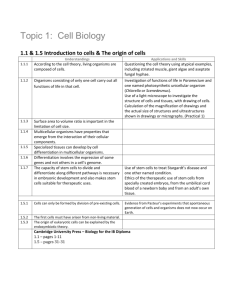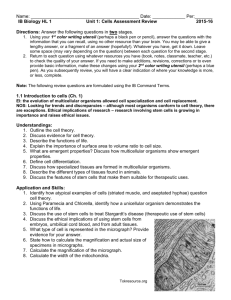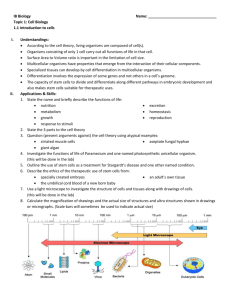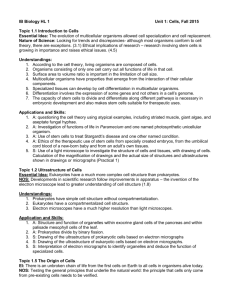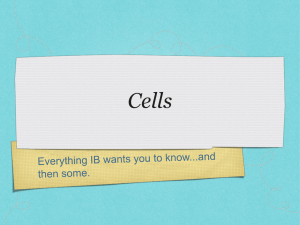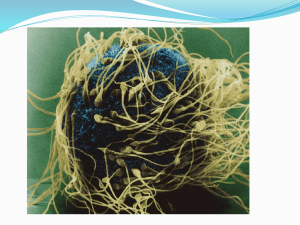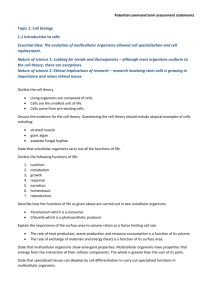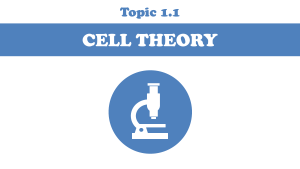Topic 1 Introduction to Cells Instructions: READ FOR
advertisement
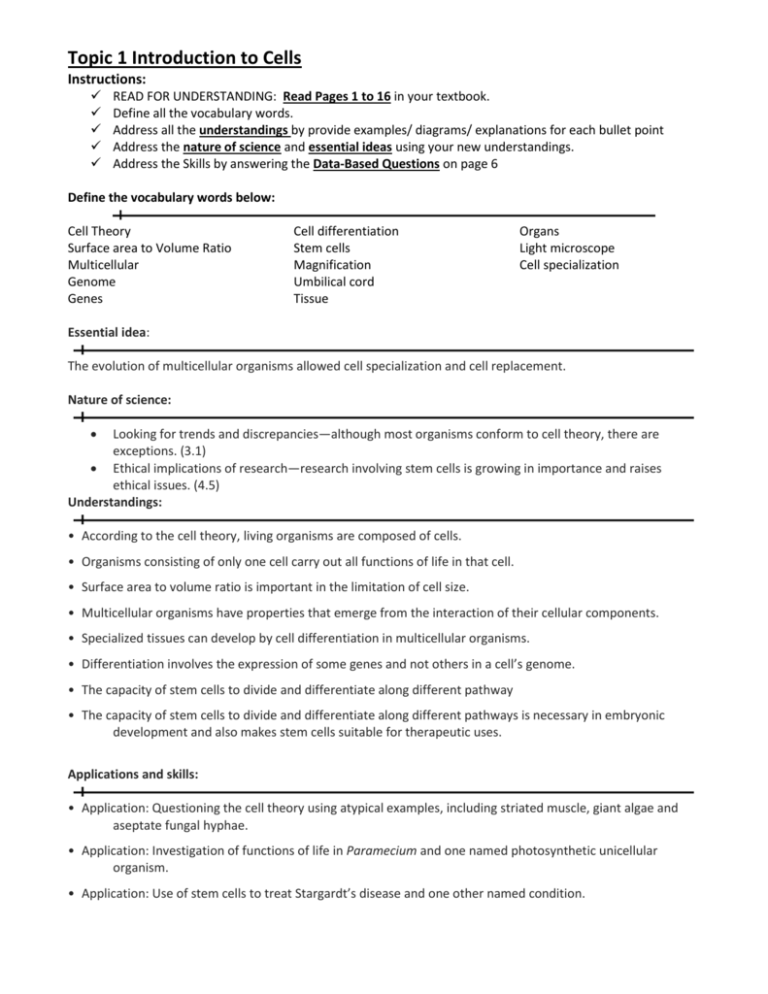
Topic 1 Introduction to Cells Instructions: READ FOR UNDERSTANDING: Read Pages 1 to 16 in your textbook. Define all the vocabulary words. Address all the understandings by provide examples/ diagrams/ explanations for each bullet point Address the nature of science and essential ideas using your new understandings. Address the Skills by answering the Data-Based Questions on page 6 Define the vocabulary words below: Cell Theory Surface area to Volume Ratio Multicellular Genome Genes Cell differentiation Stem cells Magnification Umbilical cord Tissue Organs Light microscope Cell specialization Essential idea: The evolution of multicellular organisms allowed cell specialization and cell replacement. Nature of science: Looking for trends and discrepancies—although most organisms conform to cell theory, there are exceptions. (3.1) Ethical implications of research—research involving stem cells is growing in importance and raises ethical issues. (4.5) Understandings: • According to the cell theory, living organisms are composed of cells. • Organisms consisting of only one cell carry out all functions of life in that cell. • Surface area to volume ratio is important in the limitation of cell size. • Multicellular organisms have properties that emerge from the interaction of their cellular components. • Specialized tissues can develop by cell differentiation in multicellular organisms. • Differentiation involves the expression of some genes and not others in a cell’s genome. • The capacity of stem cells to divide and differentiate along different pathway • The capacity of stem cells to divide and differentiate along different pathways is necessary in embryonic development and also makes stem cells suitable for therapeutic uses. Applications and skills: • Application: Questioning the cell theory using atypical examples, including striated muscle, giant algae and aseptate fungal hyphae. • Application: Investigation of functions of life in Paramecium and one named photosynthetic unicellular organism. • Application: Use of stem cells to treat Stargardt’s disease and one other named condition. • Application: Ethics of the therapeutic use of stem cells from specially created embryos, from the umbilical cord blood of a new-born baby and from an adult’s own tissues. • Skill: Use of a light microscope to investigate the structure of cells and tissues, with drawing of cells. Calculation of the magnification of drawings and the actual size of structures and ultrastructures shown in drawings or micrographs. (Practical 1)
